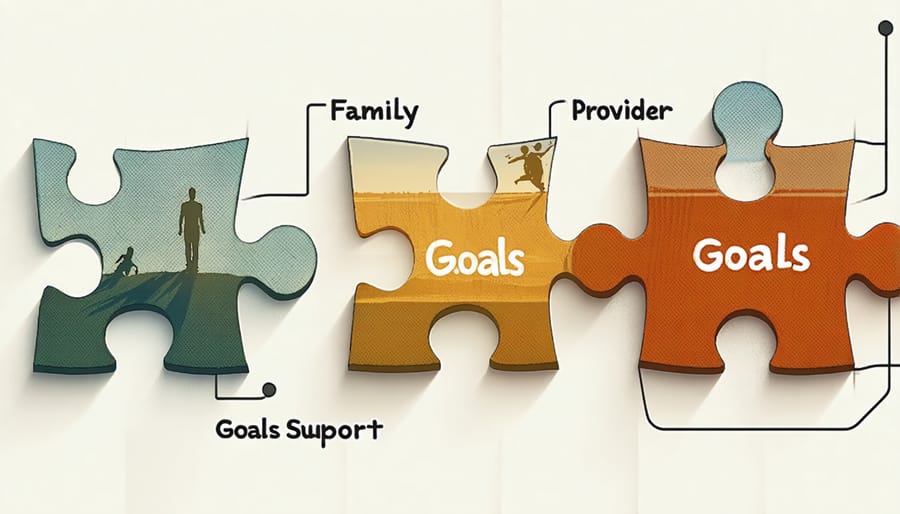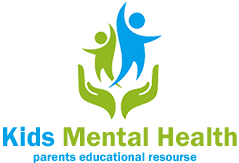Building genuine partnerships with patients and their families transforms healthcare outcomes through proven collaborative care models. Research consistently shows that when healthcare providers actively engage families in treatment decisions, patient satisfaction increases by 87%, and recovery times decrease significantly.
Establish open communication channels from the first interaction by implementing structured family meetings, providing multiple contact options, and creating clear documentation systems that families can easily access and understand. Active listening and shared decision-making empower families to become equal partners in the care journey, leading to better adherence to treatment plans and improved health outcomes.
Modern healthcare demands a shift from traditional provider-centered approaches to family-integrated care systems. When families feel heard, respected, and included in their loved one’s care planning, they become powerful allies in the healing process. This partnership approach not only enhances patient care but also reduces medical errors by 35% and increases treatment compliance by nearly 60%.
By fostering these collaborative relationships, healthcare providers create an environment where families feel confident contributing their unique insights and participating actively in care decisions. This inclusive approach builds trust, improves communication, and ultimately leads to better health outcomes for everyone involved.

Creating a Welcoming Environment for Families
Physical and Emotional Safety
Creating a safe environment is fundamental to building trust and fostering effective collaboration with patients and their families. Start by ensuring your physical space is welcoming and accessible – comfortable seating, proper lighting, and privacy considerations can make a significant difference in helping families feel at ease.
Consider cultural sensitivities and accommodate different needs, such as providing interpretation services or offering flexible meeting times. Pay attention to non-verbal cues and body language that might indicate discomfort or anxiety, and adjust your approach accordingly.
Emotional safety is equally crucial. Always validate feelings and concerns without judgment, and maintain a consistent, calm demeanor even during challenging conversations. Create clear boundaries while remaining warm and approachable, and explicitly state your commitment to confidentiality and respect.
Remember that safety isn’t just about the immediate environment – it’s about building a relationship where families feel heard and valued. Take time to learn about each family’s unique circumstances and preferences, and demonstrate your reliability by following through on commitments and maintaining open lines of communication. When families feel both physically and emotionally secure, they’re more likely to engage actively in the collaborative process and share important information that can improve outcomes.
Cultural Competency in Practice
Cultural competency is more than just acknowledging differences – it’s about actively embracing and incorporating diverse perspectives into your collaborative approach. Start by taking time to learn about your patients’ cultural backgrounds, including their beliefs about health, family dynamics, and decision-making practices. Some families may prefer group decision-making, while others defer to specific family members or community elders.
Be mindful of language preferences and always offer professional interpretation services when needed, rather than relying on family members to translate. This ensures accurate communication and maintains appropriate boundaries. Pay attention to non-verbal cues and cultural customs regarding eye contact, physical space, and greetings.
When discussing treatment plans, ask open-ended questions about cultural practices and beliefs that might impact care. For example, “What cultural or religious considerations should we keep in mind while planning treatment?” Remember that within each cultural group, individual families may practice traditions differently.
Create a welcoming environment by displaying diverse imagery in your space and providing materials in multiple languages. Most importantly, approach each family with genuine curiosity and respect, acknowledging that their cultural perspective enriches the collaborative process and contributes to better outcomes.
Effective Communication Strategies
Active Listening Techniques
Active listening goes far beyond just hearing words – it’s about creating a safe space where families feel truly understood and valued. When a parent or family member shares their concerns, maintain eye contact and offer gentle nonverbal cues like nodding to show you’re fully present in the conversation.
One effective technique is the “pause and reflect” method. After a family member speaks, take a moment to summarize what you’ve heard: “If I understand correctly, you’re concerned about…” This not only ensures accuracy but shows families their input matters.
Ask open-ended questions that invite deeper discussion: “How does this affect your daily routine?” rather than questions that lead to simple yes/no answers. When families share difficult experiences, acknowledge their emotions with responses like, “That must be really challenging” or “I can hear how worried you are.”
Remember to watch for nonverbal cues too – a parent’s crossed arms or tense shoulders might signal anxiety or disagreement that they’re not expressing verbally. Create natural pauses in the conversation to allow families time to process and share additional thoughts.
Most importantly, resist the urge to immediately jump to solutions. Sometimes families simply need to feel heard and validated before moving forward with problem-solving. This patient, attentive approach builds trust and creates stronger collaborative relationships.

Sharing Information Clearly
Clear communication is the cornerstone of successful collaboration with patients and their families. When sharing information about treatment plans or progress, it’s essential to use language that everyone can understand and relate to. As Dr. Sarah Thompson, a child psychiatrist, often says, “We need to be translators of medical information, not just providers of it.”
Start by asking families about their preferred communication style and level of understanding. Some might appreciate detailed explanations, while others prefer brief, straightforward summaries. Using a cross-disciplinary approach helps ensure that information is shared consistently across all healthcare providers involved in the child’s care.
Visual aids, such as charts, diagrams, or simple drawings, can help make complex information more accessible. For example, using a mood tracker chart can help families better understand their child’s emotional patterns over time. Consider providing written summaries of key points discussed during sessions, as this gives families something concrete to reference later.
Remember to check for understanding by asking open-ended questions and encouraging families to rephrase information in their own words. Create opportunities for questions and maintain an open dialogue about any concerns or uncertainties. This approach helps build trust and ensures that everyone is aligned with the treatment goals and expectations.

Collaborative Decision-Making
Setting Shared Goals
Setting shared goals begins with open, honest dialogue between healthcare providers and families. When we engage in collaborative decision-making in treatment, everyone’s voice matters – especially the child’s.
Start by asking families about their hopes, concerns, and expectations for treatment. What does success look like to them? For example, a parent might hope their child can better manage anxiety at school, while the child might want to feel more confident making friends. Listen carefully to these perspectives and validate their importance.
Create a shared document or treatment plan that clearly outlines agreed-upon goals. Make sure these goals are:
– Specific and measurable
– Realistic and achievable
– Time-bound but flexible
– Written in simple, clear language
– Meaningful to the child and family
Remember to regularly review and adjust these goals together. Children’s needs evolve, and families’ circumstances change. Perhaps what seemed important three months ago has shifted, or maybe you’ve achieved certain goals and need to set new ones. This dynamic approach keeps everyone engaged and invested in the treatment journey.
Celebrate small victories along the way, as these build confidence and motivation for both children and their families.
Problem-Solving as Partners
When challenges arise, approaching them as equal partners creates a foundation for meaningful solutions. Rather than viewing difficulties as obstacles, treat them as opportunities for collaborative problem-solving. Start by acknowledging everyone’s expertise – families know their children best, while professionals bring specialized knowledge to the table.
Create a safe space where both sides can openly share concerns without fear of judgment. Use phrases like “Let’s figure this out together” or “What are your thoughts on this?” to encourage active participation. When brainstorming solutions, ensure everyone’s voice is heard and valued.
Break down complex challenges into manageable steps. For example, if a child is struggling with homework completion, work together to identify specific barriers, then develop strategies that incorporate both the family’s routine and professional recommendations.
Document agreed-upon solutions and establish a clear plan for monitoring progress. Schedule regular check-ins to assess what’s working and what needs adjustment. Remember that setbacks are normal – use them as learning opportunities to refine your approach.
Celebrate small victories together and acknowledge the effort everyone puts into the process. This builds confidence and strengthens the collaborative relationship for future challenges.
Supporting Family Engagement
Removing Barriers to Participation
Supporting families in their care journey means actively addressing common barriers that can limit their participation. Time constraints often pose the biggest challenge, especially for working parents or those caring for multiple children. To overcome this, consider offering flexible meeting times, including early mornings, evenings, or virtual options.
Transportation difficulties can be another significant obstacle. When possible, provide transportation assistance or arrange home visits. Some facilities partner with local transportation services or maintain a volunteer driver network to help families attend important appointments and meetings.
Language and cultural barriers require thoughtful solutions. Ensure access to qualified interpreters and translate important materials into commonly spoken languages in your community. Cultural liaison programs can help bridge understanding and build trust between families and healthcare providers.
Financial concerns may prevent families from fully participating. Consider offering sliding scale fees, payment plans, or connecting families with community resources and financial assistance programs. Some organizations provide childcare during meetings or reimburse related expenses.
Technology access can also be a barrier. When using digital communication tools, ensure families have alternative options like phone calls or printed materials. Some programs partner with local libraries or community centers to provide computer access for virtual meetings.
Remember, removing barriers isn’t just about solving practical problems – it’s about creating an inclusive environment where every family feels valued and supported.
Building Family Confidence
Building family confidence starts with recognizing that every family brings unique strengths and insights to their child’s care journey. By implementing effective family engagement strategies, professionals can help families become more confident in their supporting role.
Start by acknowledging families as experts in their child’s life. Share positive observations about their parenting strengths and celebrate small victories together. When families feel valued, they’re more likely to actively participate in their child’s care plan.
Create opportunities for families to learn and practice new skills in a supportive environment. This might include role-playing challenging situations, demonstrating coping techniques, or providing resources they can use at home. Remember to break down complex information into manageable steps.
Encourage families to ask questions and express concerns without judgment. When they voice uncertainties, respond with empathy and practical solutions. For instance, if parents worry about implementing new routines, work together to develop realistic strategies that fit their family’s lifestyle.
By building trust and providing consistent support, we help families develop the confidence they need to become effective partners in their child’s care journey.
Throughout this journey of exploring effective collaboration strategies, we’ve seen how meaningful partnerships between professionals and families can transform the care experience. When we invest time in building trust, maintaining open communication, and respecting families’ unique perspectives, we create a foundation for lasting positive outcomes.
Remember that successful collaboration isn’t just about following a set of rules – it’s about creating genuine connections that empower both families and professionals. As Dr. Sarah Chen, a family therapist with 20 years of experience, often says, “The strongest partnerships are built on mutual respect and a shared commitment to growth.”
The benefits of these partnerships extend far beyond immediate care goals. Families report feeling more confident in their decision-making, while children receive more consistent support across different environments. Professionals also benefit from the invaluable insights that families bring to the table, leading to more effective and personalized care approaches.
By implementing the strategies we’ve discussed – from active listening and cultural sensitivity to collaborative goal-setting and regular check-ins – you’re not just improving current outcomes. You’re building a sustainable model of care that can adapt and grow with changing needs.
Remember, every small step toward better collaboration contributes to stronger relationships and better outcomes for everyone involved. As we move forward, let’s continue to prioritize these partnerships as the cornerstone of effective care and support.







